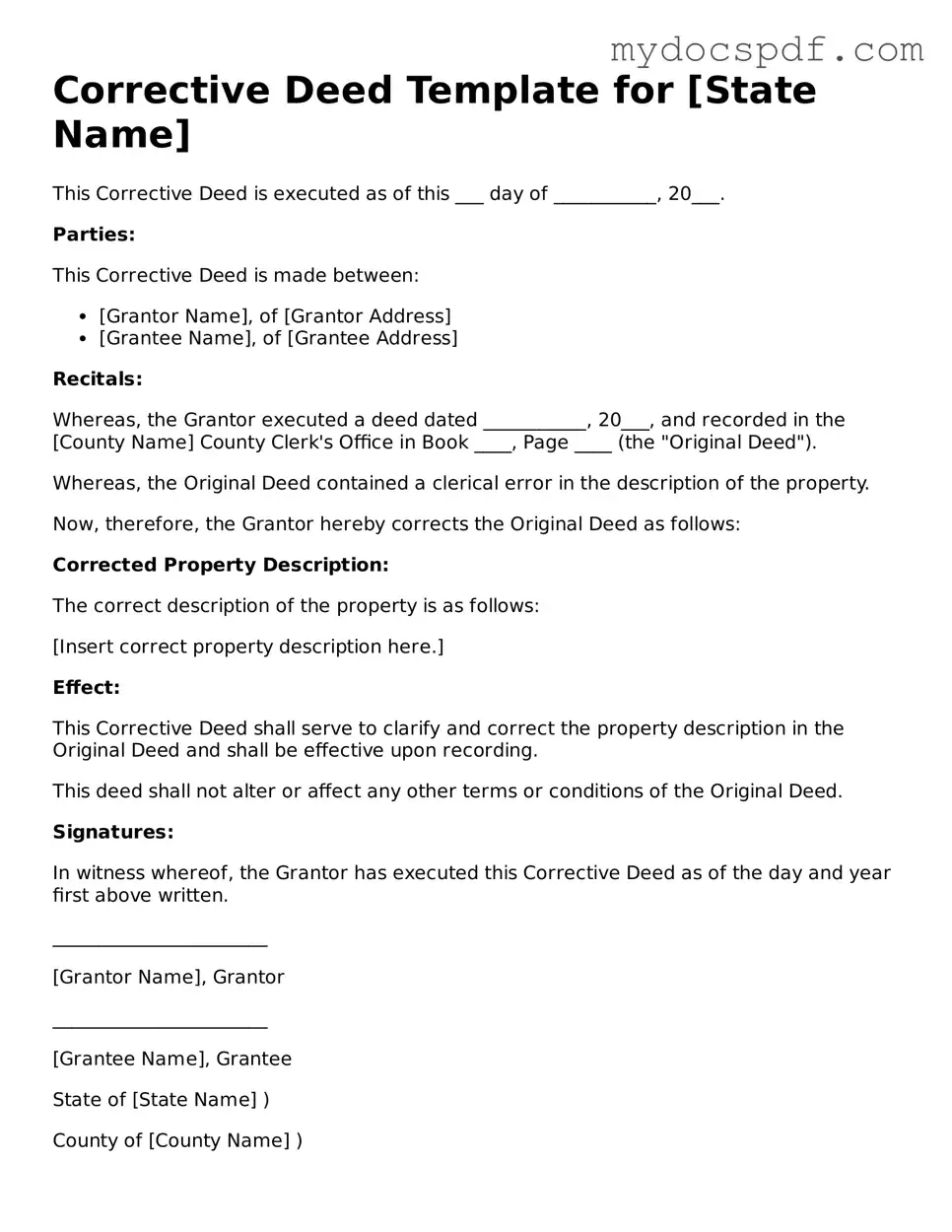Corrective Deed Template for [State Name]
This Corrective Deed is executed as of this ___ day of ___________, 20___.
Parties:
This Corrective Deed is made between:
- [Grantor Name], of [Grantor Address]
- [Grantee Name], of [Grantee Address]
Recitals:
Whereas, the Grantor executed a deed dated ___________, 20___, and recorded in the [County Name] County Clerk's Office in Book ____, Page ____ (the "Original Deed").
Whereas, the Original Deed contained a clerical error in the description of the property.
Now, therefore, the Grantor hereby corrects the Original Deed as follows:
Corrected Property Description:
The correct description of the property is as follows:
[Insert correct property description here.]
Effect:
This Corrective Deed shall serve to clarify and correct the property description in the Original Deed and shall be effective upon recording.
This deed shall not alter or affect any other terms or conditions of the Original Deed.
Signatures:
In witness whereof, the Grantor has executed this Corrective Deed as of the day and year first above written.
_______________________
[Grantor Name], Grantor
_______________________
[Grantee Name], Grantee
State of [State Name] )
County of [County Name] )
On this ___ day of ___________, 20___, before me, a notary public, personally appeared [Grantor Name], who is known to me to be the person described in this Corrective Deed, and acknowledged to me that he/she executed the same.
_______________________
Notary Public
My commission expires: _____________
